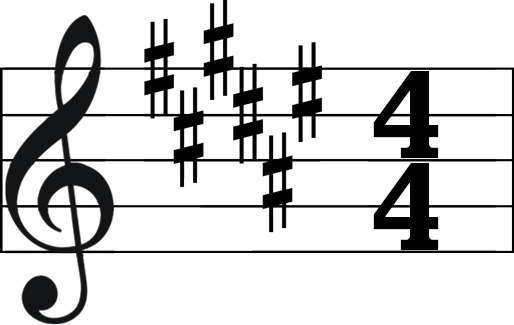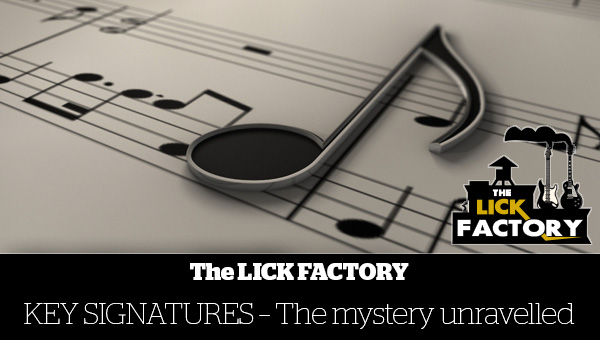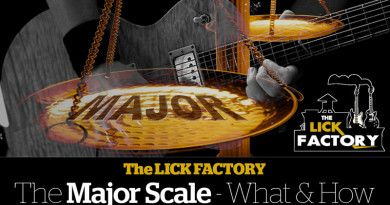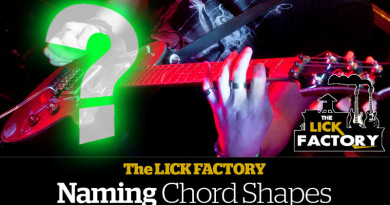KEY SIGNATURES – The mystery unravelled
Key Signatures is the name given to the collection of sharps and flats that appear at the beginning of a piece of music between the clef and the time signature. But what are they, where do they come from and how are they used?
One of the theoretical concepts that is heavily used in the LICK FACTORY courses are Key Signatures. Key Signatures is the name given to the collection of sharps and flats that appear at the beginning of a piece of music between the clef and the time signature.

When using the Major Scale formula (T, T, S, T, T, T, S) to build a scale up from each and every note of the chromatic scale, you will find that every scale you end up with has Sharps and Flats in it. The only exception to this is the C Major Scale.



If you were to sharpen or flatten each individual note in a complete piece of music, the reading process can become a bit of a challenge especially if we’re dealing with scales that have up to 6 sharps or flats in it. The Staff becomes extremely cluttered and like most things in life, clutter can make it hard to focus.

This is where Key Signature’s come in. To make the reading process neater and more efficient, we collate all the sharps and flats of the scale at the beginning of each system of music. By looking at the notes that have been sharpened or flattened you can immediately tell what key (or scale) you will primarily be using while playing through an individual system or line of music.

Key Signatures act as an ‘override’ for each note written on the staff. All the notes that have been sharpened or flattened in the Key Signatures should be played as such. This is the case even though the individual notes on the system may not have any symbols before them. For example, if you have an F# in the key signature, every note in the piece of music that is written as an ‘F’ should be played as an F#.
NEUTRAL KEY SIGNATURES:
When building up the Major scale using the Major scale formula (T, T, S, T, T, T, S) there is only one key that ends up without any sharped or flattened notes in it. This one scale is the C Major Scale.

SHARP KEY SIGNATURES:
The order in which the sharps appear in key signatures is: F#, C#, G#, D#, A# E# and B#. A simple rhyme to remember this order is “Father Christmas Gives Dolls And Electric Bells”. The keys that this applies to is G Major (1 sharp), D Major (2 Sharps), A Major (3 Sharps), E Major (4 Sharps), B Major (5 Sharps) and F# Major (6 Sharps).

FLAT KEY SIGNATURES:
The order in which the flats appear is: Bb, Eb, Ab, Db Gb and Cb. A way to remember this order is to spell “BEAD” and put a “G,C” at the end.
The keys that have flattened notes in them are F Major (1 Flat), Bb Major (2 Flats), Eb Major (3 Flats), Ab Major (4 Flats), Db Major (5 Flats) and finally Gb Major (6 flats).

It is possible to have Keys and Key Signatures with more than 6 sharps of flats, however these become quite difficult to read. For example, C# Major would have 7 sharps in its key signature, however it is easier to read using its ‘enharmonic equivalent’ (1 note with two names) Db Major which has 5 flats in its key signature.
This article is based on concepts from the LICK FACTORY’s Preliminary Lessons. Everything you need to know to get started on your musical journey.
Need a quicker fix? the ULTIMATE CHORD GUIDE: Volume 1 might be the answer.





